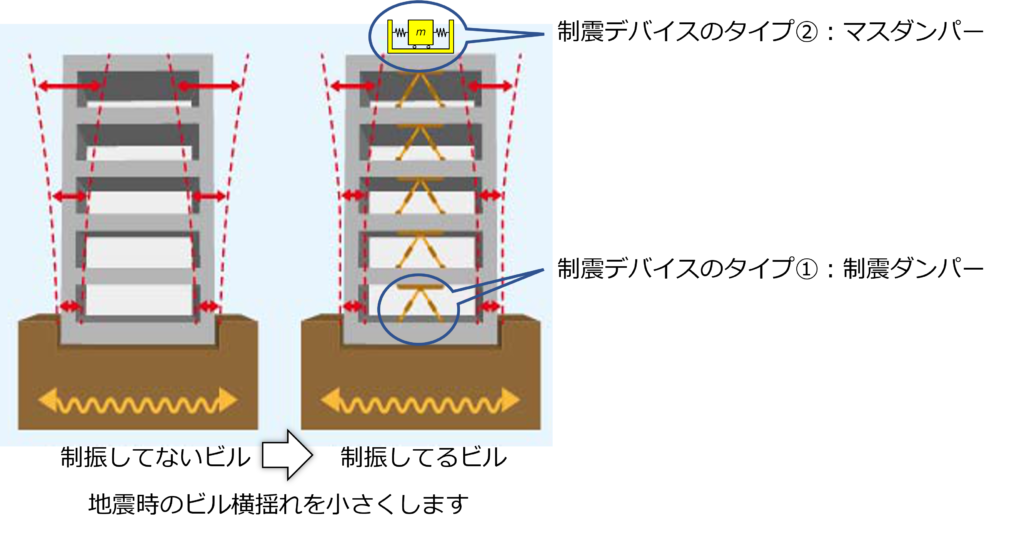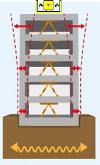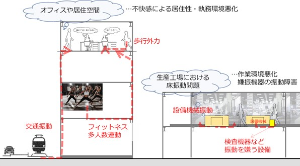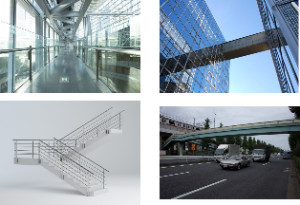You may have heard of vibration control technology as one type of vibration control technology. We often hear people say, "I don't understand it" or "It looks too difficult" as a general impression of vibration control. Starting with this issue, we will explain vibration control in an easy-to-understand manner over the course of three articles. In this article, we will explain, in particular, vibration control technology as a countermeasure against earthquakes, or "seismic damping.
What is vibration control (seismic)?
Vibration control (seismic damping) is a technology that primarily reduces vibration (shaking) of buildings and other structures. It absorbs vibration and seismic energy to quickly reduce shaking. This technology is used to counteract vibrations that occur in a variety of situations. Generally, when the vibration in question is an earthquake, it is described as vibration control.
Seismic Response Control Mechanism
Vibration control technology is achieved primarily through the use of devices called "vibration control devices. By attaching these devices to a structure, they absorb the shaking of the structure and reduce vibration.
Seismic Response Control Device Type
This section describes each type of vibration control device used to reduce building sway during earthquakes.

Figure 1 Seismic Response Control Devices in Buildings
Seismic Response Control Device Example 1: Seismic Response Control Damper
When you hear about earthquake protection, you may think of components like the one pictured below in a building.

Figure 2: An example of seismic isolation brace
These are called vibration control braces, which work by absorbing seismic shaking by converting vibration energy into heat and other forms of energy as the damper members deform, expand, and contract. Seismic dampers are often made of rubber, oil, or metal materials.
Seismic Response Control Device Example #2: Mass Damper
Mass dampers (also called dynamic vibration absorbers) are another type of vibration control device. As shown in Figure 3, a mass damper is attached to the roof of a structure and its weight moves in the opposite direction to the horizontal vibration of the structure, thereby counteracting and reducing the vibration of the structure.
A mass damper that moves a weight by tuning the natural frequency of the weight (mass) to the natural frequency of the structure is called a Tuned Mass Damper (TMD).
On the other hand, a type of mass damper in which the weight is moved by a motor or other power source is called an Active Mass Damper (AMD).

Figure 3: Mass Damper Image
We have experience in installing TMDs for earthquake protection. In order to reduce building sway caused by earthquakes, the weights are very large, weighing 100 tons.
Protecting Buildings from Earthquakes. ~100-ton class TMD case study~.

Figure 4: An example of TMD for earthquake countermeasures
Case Studies of Countermeasures
| In what place? What kind of shaking? | Causes of shaking | Problems due to shaking |
Lateral sway (horizontal vibration) of the entire building Example of Seismic Building Vibration Control Example of wind sway vibration control in an office Example of wind sway vibration control for a hotel | Earthquake Strong winds, etc. | Building collapse/damage, internal furniture overturned, etc. Anxiety and discomfort due to shaking |
| Floor swaying (vertical vibration) in the building Offices, residences, factories, etc.  Examples of office vibration environment improvement (1) Examples of office vibration environment improvement (2) Examples of office vibration environment improvement (3) Examples of factory working environment improvements Examples of fitness and tatenori vibration countermeasures | Traffic vibration Walking vibration Fitness Equipment and machinery, etc. | Decreased livability and workability due to discomfort Malfunction of precision instruments and other equipment due to vibration |
| Bridge structure (vertical oscillation) Stairs, pedestrian bridges, connecting corridors, crossing corridors, etc.  Example of staircase vibration environment improvement Example of Walking Vibration Control in Crossing Corridors | Walking vibration, etc. | Discomfort, difficulty walking in traffic |
